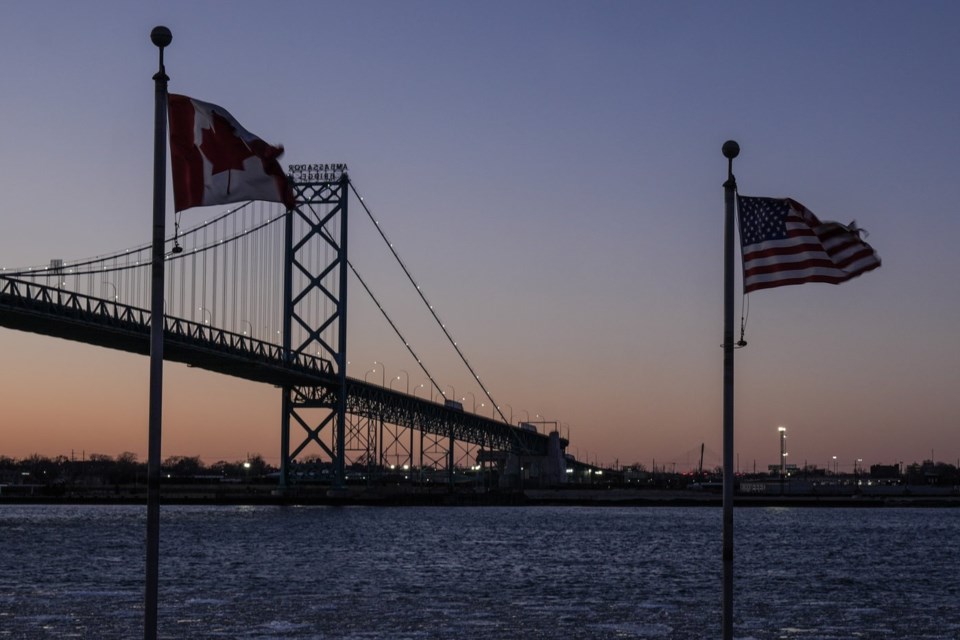Uncertainty still looms for Canada in what's set to be a monumental week for U.S. President Donald Trump's tariff plan. With multiple categories of American import taxes set to take effect, some Canadian industries are waiting to find out if and how they might be affected.
Here's a rundown on what to watch for this week.
Tuesday: Trade review
On Trump's first day in office, he signed an executive order to enact the "America First Trade Policy," which called for his trade and commerce officials to report back to him by April 1 on a sweeping review of U.S. trade policy and relationships.
That date does not come with an imposition of any tariffs by default, but does direct Trump's administration to begin examining the Canada-U.S.-Mexico Agreement, which Trump signed in 2018, ahead of a planned 2026 review.
Prime Minister Mark Carney confirmed last week that he and Trump agreed to begin negotiations about "a new economic and security relationship" following the federal election.
Wednesday: Pause expires
Since Trump was elected, the bulk of attention has been on his threat of blanket 25 per cent tariffs on imports from Canada, along with a lower 10 per cent rate for energy products that was later announced.
Trump has often characterized those tariffs as a response to the flow of fentanyl and illegal migrants into the U.S., although the Canadian government says Canada is the source of less than one per cent of all fentanyl and illegal crossings to that country.
The levies took effect March 4 and Canada responded to those — along with a separate category of tariffs targeting steel and aluminum products — with its own retaliatory tariffs.
But two days later, Trump paused the application of his universal tariffs for goods and services compliant with the United States-Mexico-Canada Agreement.
That pause is set to expire on April 2. Canada agreed to wait until then to implement its second wave of retaliatory tariffs.
A White House official said on background Monday that no final decision has been made on how the U.S. will proceed with regard to that category of tariffs.
Wednesday: Reciprocal tariffs
April 2 also marks a key date for a separate category of tariffs set to take effect, which the Trump administration has dubbed "reciprocal" tariffs.
Those would apply to goods from countries that have tariffs on U.S. products, matching the rates they charge on imports, including subsidies and value-added taxes. Officials have said reciprocal tariffs would stack on top of other tariffs.
Trump signed a memorandum on Feb. 13 directing his trade czar to examine what he perceives as unfair trade practices from other nations. A fact sheet accompanying that memorandum flagged Canada's digital services tax targeting tech giants doing business in the country as one such measure the U.S. might like to see addressed with reciprocal tariffs.
Carney has said Canada would retaliate if it is affected.
Thursday: Auto tariffs
Trump also said last week he would impose a 25 per cent tariff on imports of automobiles and auto parts starting April 3.
It's still not certain what that means for the Canadian auto sector.
A White House official said on background that these tariffs would stack on top of the fentanyl-related tariffs if the automobiles or parts aren't being imported under the terms of the USMCA. That would mean some autos or parts could face an overall tariff of up to 50 per cent.
Automobiles covered under the trade agreement would be hit with a 25 per cent levy until a new system is set up to gauge how much of each finished car is made with foreign components.
Parts covered by the agreement would be tariff-free, according to the official.
Trump said the move is meant to encourage the Detroit Three automakers to move their parts divisions back to the U.S., but industry officials warn the plan risks essentially shutting down the sector and costing many Americans their jobs.
— With files from Kelly Geraldine Malone in Washington
This report by The Canadian Press was first published March 31, 2025.
Sammy Hudes, The Canadian Press



